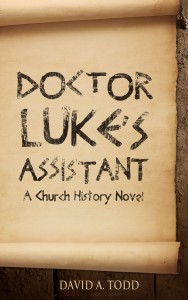Having completed the work on Headshots—all but the re-formatting for Smashwords and uploading it there—I have turned my attention back to Documenting America, Civil War Edition. Last weekend I wrote one chapter in manuscript, and typed it. I also went searching for source documents for some non-battle chapters, and had some success. I’d already identified what documents I wanted to use, so it was just a question of whether I could find these on-line, in a copy-able form, to avoid re-typing. I found three of four of them for upcoming chapters, and copied them into my Word document for the book. I still have editing to do on them, but at least they are there. That’s a big part of the work.
Yesterday I began careful reading of the reports I downloaded on the Battle of Shiloh. From a couple of websites I found a good number of reports from generals in the field, from both the North and South. These ranged from initial battle orders to snap reports to detailed reports to transmittals. I didn’t find any orders during the heat of the battle, but possibly back then they didn’t write such orders, rather sending them via orderlies and assistants. A couple of weeks ago I aggregated these reports into a single Word document and formatted it for convenient reading. Yesterday I printed it, and last night I began detailed reading of it. As I was gathering the reports, I mainly skimmed them for general understanding of the content.
I find these reports quite interesting. I’ve talked with military men, at the junior officer level, about what modern military orders and battle reports look like, and I think they are nothing like what was done in the Civil War era. The orders issued by General Johnston of the Confederates said very little about the military objectives of the campaign. I realize I likely don’t have every document, every order he issued. But if, as I think, I have the main one, he’s not very clear about what he wants to do. Drive the invaders out of his country. Turn the enemy’s flank. Corps such and so under General So and So to form a battle line here. But no where does it say, “Our objective is to take [this land] [this town]” or “Our objective is to stop the enemy’s advance south of Shiloh meeting house, and drive him back to the Savannah-Bethel Springs line,” etc.
Snap reports, on both sides, tended to convey little information to remote superiors, and even to misstate things. Both sides claimed they were fighting a foe of superior numbers, whereas history teaches us the two sides were about equal in soldiers and armaments. The North had a slight superiority in that they had ironclad gunboats on the river, close enough to fire on the Southern armies. But except for that, from what I’ve been able to gather, it was a pretty even fight.
The battle results seem to be much the same as the one I looked at for a previous chapter, the first Battle of Bull Run, but with the sides reversed. The South were the aggressors, advancing on Northern positions, with a (seemingly) vague idea to turn the flank of the enemy and thus prevent his retreat. Initially the South had success, capturing Northern artillery, gaining ground, and, at the end of first day, able to report success. After that the North had reinforcements come in, which encouraged their troops and demoralized the South, and they pushed the South back. At the end of the second day the South was defeated and in retreat. It was just like that at Bull Run, but with North and South reversed, and with that battle happening on a single day.
A big difference between the two battles was that at Bull Run, the North retreated in panic and disarray, whereas at Shiloh the Southern retreat was orderly and disciplined. The fighting had been going on eight additional months by this time, and both armies were learning how to fight like soldiers. Their generals, also, were learning how to lead like generals. At Shiloh, the big “star,” if I may call him that, was William Tecumseh Sherman, who had the main success for the North on day two, and was recommended for a promotion as a result.
I’m about 1/3 of the way through these reports. I hope to finish them tonight, or perhaps tomorrow. The following day I’ll edit them, and the day after will write the chapter. Certain parts of the chapter are already coming to mind. Some of it might be similar to parts of this blog. I can for sure see that the battle chapters are going to take longer to research/edit/write than will the other chapters. Shiloh is chapter 11, I think. The book will have 31 chapters if my current plans hold. Since I have much research done for later chapters, I’d say I’m 1/3 or more done with the book. That’s a good feeling.



